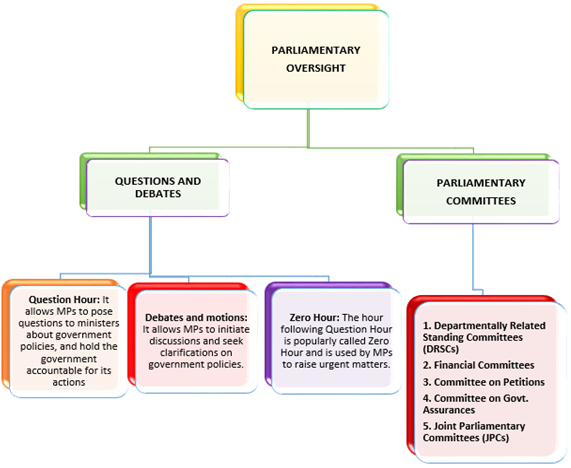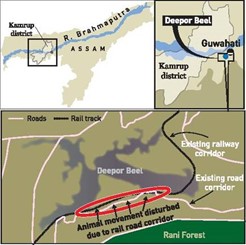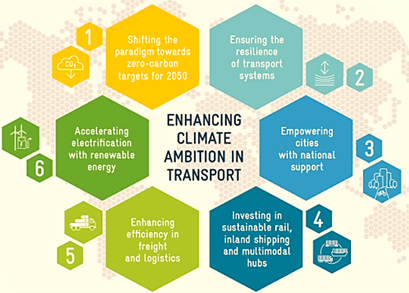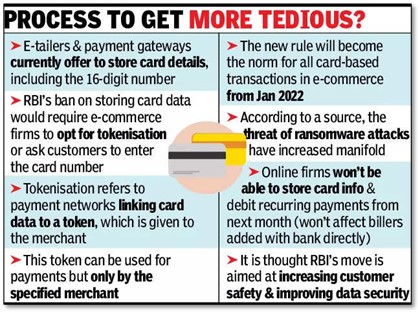Tuesday, 31st August 2021
Quality control curbs to stop low-grade imports
In News
The Department for the Promotion of Industry and Internal Trade (DPIIT) is considering to expand the quality control orders (QCOs) for products ranging from electronics to industrial machinery.
About the news
- Objective: The move is a part of the Ministry of Commerce and Industry drive to formulate standards/technical regulations or put in place QCOs and aims to target the imports of sub- standard products.
- Policy Shift: India’s move to develop technical specifications for products in recent years marks a shift in its approach to curb the inflows of substandard products. Its earlier approach was to raise tariffs.
- Applicable to: Both Indian manufacturers and foreign suppliers will have to conform to the same standard specifications.
- This will ensure free and fair trade and access to quality products to domestic consumers.

- Significance: The idea behind the move to enforce standards is to curtail low-grade imports as well as improve the domestic output of quality products. This will, in turn, help boost exports and substitute low-grade imports, in sync with Atmanirbhar Bharat.
About Quality Control Orders
- About QCOs: For ensuring availability of quality products to consumers, Quality Control Orders (QCOs) are issued by various Ministries/Departments of Government of India in exercise of the powers conferred by the Bureau of Indian Standards Act, 2016 and Indian Explosives Act, 1884.
- They are in sync with the WTO Agreement on Technical Barriers to Trade.
- The regulatory body: Bureau of Indian Standards (BIS), the National Standards Body of India is engaged in the activities of Standardization, Conformity Assessment and Quality Assurance of goods, articles, processes, systems, and services.
- Type of Export Barrier: QCOs are part of non-tariff barriers to trade such as licenses, quotas, sanitary and phytosanitary measures etc.
- Compared to countries such as USA, China, Japan etc., which have effectively used non-tariff measures to tackle import of substandard products, India imposes very low non-tariff measures.
Sources:
RBI’s Proposed Changes in Microfinance Policy
In News
The Reserve Bank of India has released a Consultative Document on the Regulation of Microfinance in to revamp the regulatory policy for microfinance institutions.
About the News
- Current Status: The policy of the RBI which regulates microfinance activities of NBFC-MFIs covers only 30% of all microfinance financial institutions in India, meaning that the remaining 70% (banks including small finance banks, non-profits, etc.) are not subject to policy restrictions such as loan caps and lender limit norms.
- Lending rates for microcredit remain high despite some NBFC-MFIs and banks having achieved scale and having low expenditure.
- Aim of the GS Paper: The proposed changes aim for a uniform policy regime to all entities regulated by the RBI which undertake microfinance. These proposals may be a step towards making the regulatory policy more borrower-friendly.
The Proposed changes in the RBI GS Paper
- Overall Permissible Indebtedness Limit: The RBI proposes that the overall permissible limit should not exceed 50% of the household income. This would apply to a rural household with an income of not more than Rs 1.25 Lakh as well as an urban or semi-urban household with an income of not more than Rs 2 Lakh.
- Constraints on Borrowing: It has been proposed to do away with the current restriction on a borrower being able to borrow from only two lenders. Will be applicable to both NBFC-MFIs and all regulated entities of the RBI and also divert the borrower away from informal lenders.
- Purpose Specification on giving a loan shall be removed: The RBI proposes to remove the restriction that 50% of the loan issued by NBFC-MFIs shall be for income generation purposes, along with the removal of the sub-limits and tenure for such loans.
- In the Indian context, there are many other purposes, other than income generation, for which a microfinance loan may be taken.
- Interest Rate Cap: The RBI proposes to do away with the interest rate cap on microfinance loans. The removal of the cap appears to be more of a breather to banks and will also make the market more competitive and promote innovation.

Source:
- Why RBI’s proposed microfinance policy changes are borrower-friendly
- RBI aims to tackle microloan burden with new MFI rules
Image source:
Bringing InvITs under Insolvency and Bankruptcy Code
News
NITI Aayog has suggested to the government to bring InvITs under the Insolvency and Bankruptcy Code for the success of the National Monetisation Pipeline (NMP).
About the News
- The NITI Aayog has recommended the government to give Income tax breaks to attract retail investors into instruments like Infrastructure Investment Trusts (InvITs) to make the National Monetisation Pipeline (NMP) a success.
- The government plans to use the InvITs and REITS route to monetise public assets like highways, gas pipelines, railway tracks and power transmission lines.
- AS per the NITI Aayog, more tax-efficient and user-friendly mechanisms like allowing tax benefits in InvITs as eligible security to invest under Section 54EC of the Income-Tax Act, 1961, are important starting points for initiating retail participation in the instruments
- Section 54EC allows taxpayers to offset long-term capital gains from transactions in immovable properties through investments in bonds issued by some government-backed infrastructure firms.
- Currently, the Insolvency and Bankruptcy Code (IBC) does not cover trusts under its ambit.
- While InvIT structures have been used in India since 2014, such Trusts are not considered a 'legal person' and cannot be brought under IBC proceedings, deterring lenders from participating.
- Infrastructure regulators and SEBI would need to work in tandem for a successful insolvency resolution of an InvIT which may involve a change in the sponsor, investment manager and/ or trustee or transfer of an infrastructure asset
What are Infrastructure investment trusts (InvITs)?
- InvITs are collective investment vehicles similar to a mutual fund.
- It enables direct investment of money from individual and institutional investors in infrastructure projects to earn a small portion of the income as return.
- It enables developers of infrastructure assets to monetize their assets by pooling multiple assets under a single entity (trust structure).

Benefits of bringing InvITs under IBC
- While the lenders are protected under the Securitisation and Reconstruction of Financial Assets and Enforcement of Security Interest Act, 2002 (SARFAESI Act) and the Recovery of Debts and Bankruptcy Act, 1993, the provision of recourse under IBC regulations will bring in added level of comfort for the investors
- It will attract retail as well as institutional investors and help achieve the goals of the National Monetisation Pipeline scheme.
Source :
Image Source:
Compromise of Parliamentary Oversight Mechanism
In News
Recently, the Chief Justice of India (CJI) expressed unhappiness at the increased lack of debates in the Indian parliament and the state assemblies, while laws are being enacted.
About the News
- The CJI’s remarks hold significance particularly when most of the 20 Bills cleared in the just-concluded monsoon session of parliament were passed only with a voice vote and without any debate.
- The lack of clarity and purpose for which a law is made has results in a lot of litigation and inconvenience to the government and the public.
- The CJI also said that one of the chief reasons for the falling standards of parliamentary debates was the absence of intellectuals and professionals like lawyers in the Parliament.

What is Parliamentary Oversight?
- The principle of parliamentary sovereignty assumes accountability of the elected executive to the legislature, and oversight is an important part of ensuring accountability.
- Through its oversight function, Parliament holds the government accountable and ensures that policies are efficient and in keeping with the needs of citizens. In addition, parliamentary oversight is essential to prevent arbitrary and unconstitutional action by the government.
Why is Parliamentary Oversight Mechanism needed?
- Accountability of Executive: It is the function of Parliament to exercise political and financial control over the Executive and to ensure parliamentary surveillance of administration. Deliberations in Parliament and scrutiny of laws in its committees helps understand the intention behind the laws and their planning.
- Public representation: In a parliamentary polity, Parliament embodies the will of the people and so oversees the way in which public policy is carried out and ensures that the objectives of socio-economic progress, efficient administration and the aspirations are adhered to.
- Effective Deliberations: Committees are platforms for threadbare discussion on a proposed law. Committee meetings are ‘closed door’ and members are not bound by party whips, which allows them the latitude for a more meaningful exchange of views.
- Financial accountability: Parliaments approve and scrutinise government spending by highlighting waste within publicly funded services. Their aim is to improve the economy, efficiency and effectiveness of government expenditure.
- Uphold the rule of law: Parliament should protect the rights of citizens by monitoring policies and examining potential abuses of power, arbitrary behavior, and illegal or unconstitutional conduct by government.
India’s Parliamentary Oversight Mechanism
What can be to Strengthen Parliamentary Oversight?

- Parliament’s power to convene itself: Granting Parliament the power to convene at the request of a required number of MPs may allow Parliament to address issues more promptly, even during inter-session period. Currently, Parliament does not have the power to convene itself.
- Role of the opposition: Within the institution of Parliament, the opposition can play a central role in monitoring the government and holding it accountable. Opposition parties could play a greater role in deciding the daily agenda of Parliament, or alternatively, time could be set aside each week for opposition parties to set the agenda.
- Accountability measures on the floor of each House: Both Houses of Parliament are governed by their respective rules of procedure, which can be modified by increasing accountability in Question Hour, strengthening discussions and examination of reports.
- The committee system: Reforms in the committee system can be brought about by ensuring accountability of minsters through attendance of ministers before committees, increasing transparency in the procedures of the committees and increasing public participation through suggestions from the public on some issues.
- Oversight of regulators: Parliament must develop formal oversight mechanisms for regulators, such as the Reserve Bank of India, Telecom Regulatory Authority of India (TRAI), etc. as certain functions that were earlier carried out by government departments are now under the purview of these regulatory bodies.
Conclusion: The parliamentary oversight function is one of the cornerstones of democracy. A robust monitoring of the executive by the parliament is an indicator of good governance. Besides the parliament’s legislative function, it is through oversight that the parliament can ensure a balance of power and assert its role as the defender of people’s interests. It is important for a parliament’s institutional and legal framework to encourage MPs to make effective use of their powers of oversight.
Question: Discuss the need for Parliamentary oversight with some recent examples and the various oversight tools used in the Indian parliament.
Sources:
- Lack of debate in House causing gaps in laws: CJI
- 'Sorry State of Affairs': CJI Ramana Says Lack of Parliamentary Debates Causing Gaps in Laws
- EXECUTIVE–ITS ACCOUNTABILITY TO PARLIAMENT
- Under Modi government, Lok Sabha and Rajya Sabha have ceased to be key places for debate
- Parliamentary scrutiny on the back burnerWhy are parliamentary standing committees necessary?
- Parliamentary Oversight of the Executive
This Day in History - States Reorganization Bill
On August 31, 1956, the President of India gave his consent to the States Reorganisation Bill, making it the States Reorganisation Act. Based on the recommendations of the Fazal Ali Commission, the Central government passed the States Reorganisation Act of 1956. States were reorganised on linguistic lines. The Act provided for creation of 14 states and 6 union territories.

Sources:
Image Source:
Hurricane Ida
This is the image of Hurricane Ida captured by the European Space Agency. Hurricane Ida has been said to be more dangerous than 2005’s Hurricane Katrina, which was the worst storm in America’s history. Ida is a Category 4 storm that has hit the shores of Louisiana, 16 years after it was struck by Katrina. Extreme events have become more frequent in the last couple of years with several parts of the world facing the brunt of the changing weather pattern.

Sources:
Deepar Beel Wildlife Sanctuary
- Context: The Ministry of Environment, Forest and Climate Change has notified the Deepar Beel Wildlife Sanctuaryon the south-western edge of Guwahati, as eco-sensitive zone.
- It is a riverine wetland in the lower Brahmaputra valley that expands up to 30 sq. km in summer and reduces to about 10 sq. km in the winter and it also locates a wildlife sanctuary within this wetland.
- Deepar Beel is one of the largest perennial freshwater lakes around Guwahati and state’s only Ramsar site besides being an Important Bird Area.
- Deepar Beel constitutes a unique habitat for aquatic flora and avian fauna.
- The area has been notified as the eco-sensitive zone as it is being threatened by human settlements and ever-increasing development activities.
- The main purpose of declaring an econ-sensitive zone is to create a shock-absorbing zone around a protected area.

Source:
- Assam’s Deepar Beel Wildlife Sanctuary breathes easy after eco-sensitive zone notification
- Deepor Beel, the riverine wetland in lower Brahmaputra valley, on the brink
Image source:
BH' registration series
- Context: The road transport ministry has come up with a new registration mark called the Bharat Series (BH-series) for new vehicles.
- This new vehicle registration regime will free vehicle owners from re-registration process when they shift from one state /union territory to another thereby facilitating free movement of personal vehicles across states/union territories.

- Currently, a person is allowed to keep vehicle for a maximum of 12 months in any state other than the state where it is registered. The owners must get such vehicles re-registered before the expiry of 12 months.
- The format of BH-series registration mark will be YY BH #### XX.
- YY denotes the year of first registration, BH is code for Bharat Series, #### is the randomized four-digit number and XX are two alphabets.
- The registration facility under BH-series will be available on voluntary basis to defence personnel, employees of central government/ state government/ central/ state public sector undertakings and private sector companies/organizations, which have their offices in four or more states/union territories.
Source:
- Govt brings new 'BH' registration series for personal vehicles: How it will work
- New Bharat Series (BH) for vehicle registration: Know what it means, who can avail...
Image source:
New species added to India’s fauna: ZSI
- Context: India has added 557 new species to its fauna, which includes 407 new species and 150 new records according to “Animal Discoveries 2020”, published by the Zoological Survey of India (ZSI).
- Of these 557 species, invertebrates constitute 486 species (dominated by insects), while vertebrates constitute 71 species (dominated by pisces and reptiles).
- Among the states, the highest number of new species were discovered from Karnataka (66 species), followed by Kerala (51 species), Rajasthan (46 species) and West Bengal (30 species)
- In terms of new records or species recorded in the country for the first time, Arunachal Pradesh had the highest (20 new records).
- India is positioned 8th in mega biodiversity countries in the world with 0.46 BioD index (percentage of species in each group relative to the total global number of species in each group).
- ZSI, set up by British zoologist Thomas Nelson Annandale in 1916, has been publishing Animal Discoveries, the repository of such new species since 2007.
Source:
West Nile Virus
- Context: Russia has warned of a possible increase in West Nile virus infections this autumn as mild temperatures and heavy precipitation create favourable conditions for the mosquitos that carry it.
- The West Nile Virus, originally from Africa, is the leading cause of mosquito-borne fatal neurological diseases in humans.

- Commonly spread to people by the bite of an infected mosquito in Europe, Asia and North America regions, the infections in the regions mostly occur during mosquito season, which starts in the summer and continues through fall.
- People infected with the virus develop fever and symptoms could be mild or severe illness affecting the centralnervous system such as encephalitis (inflammation of the brain) or meningitis (inflammation of the membranes that surround the brain and spinal cord).
- Illness can occur in people of any age; however, people over 60 years of age are at greater risk for severe illness.
- There are no vaccines to prevent West Nile virus.
Source:
Image source:
Is Taliban really open to commercial and political engagement with India?- IE
Essence: Recent collapse of Afghanistan government and the return of the Taliban has raised several uncomfortable questions for India including commercial and political engagement of India with Taliban. According to several reports, US is providing intelligence inputs to the Taliban on the terror threats from ISIS-K. It shows there are no permanent friends or enemies, only permanent interests. India is not immune to this essential principle of international relations and will find ways to protect its stakes in Afghanistan under Taliban rule. It is unwise for Delhi to paint the external challenges arising from the Afghan tumult as a single coherent force; and to believe in leveraging the external threat for domestic political ends.
Why should you read this article?
- To understand what could be India’s stand on its relation with Taliban?
- To know why it would be good for India to find out new leadership in Kabul.
Source:
A monetization move that does not tick most boxes- TH
Essence: The Government has launched a National Monetization Pipeline (NMP) to mobilize resources for financing infrastructure. Author reminds readers of India’s not so pleasant experience of using public-private partnership (PPP) and fickle stock market as vehicles to boost infrastructure growth. In this context, it is pointed out that planned NMP, which is conceptually similar to these failed experiments, may not be able to achieve its intended goal.
Article suggests that at a time when financial market is flush with high liquidity at low cost, government should better replace this idea of asset monetization with debt monetization i.e raising loans from market.
Why should you read this article?
- To have an alternate view of the idea of National Monetization Pipeline.
- To understand the different ways to finance infrastructure projects and their critique.
Source:
India is indeed walking the green talk- TH
Essence: The article appreciates India’s efforts towards meeting and exceeding its Nationally Determines Contributions (NDC) in lines with Paris Climate Deal 2015. The article sheds light on incomplete efforts of various developed countries such as USA, Australia and France in climate change related policy making. It looks difficult for developed countries to fulfil their responsibilities in reducing Green House Gas Emissions. There are concern over China aiming to peak its emissions by 2030 as China is the second biggest reservoir of coal. The article explicitly reminds the world that India has walked the talk by achieving over 38% electric power from non-fossil fuel-based sources by November 2020 against the target of 40% by 2030. India with its initiating efforts in International Solar Alliance is moving in the right direction.
Why you should read this article?
- To understand India’s contributions in combating Climate Change.
- To draw a comparison on efforts by India and the rest of the world.
Source:
Teaching at the Right Level
Background:
- The learning outcome around rural India is low even after an enrolment of over 96% children in school.
- Learning trajectories over time are flat implying students who do not acquire foundational skills in the primary school years, are unlikely to pick them up later.
- This has resulted that only the “top of the class” benefits from the teaching.
TARL: Teaching at the Right Level
- NGO Pratham came up with a concept of Teaching at the Right Level (TaRL) which enables children to acquire foundational skills regardless of age or grade.
- Teaching starts at the level of the child and the focus is on helping children.
- These foundational building blocks help a child to acquire capabilities that endure over time.
Benefits:
- TaRL is an effective and low-cost strategy that helps children to “catch up” in a short period of time.
- Reducing the learning gaps by involvement of each child.
- Incremental steps like this can bring a big change.
Quote:
Everybody is a genius. But if you judge a fish by its ability to climb a tree, it will live its whole life believing that it is stupid.” Albert Einstein
Source:
Share the article
Get Latest Updates on Offers, Event dates, and free Mentorship sessions.

Get in touch with our Expert Academic Counsellors 👋
FAQs
UPSC Daily Current Affairs focuses on learning current events on a daily basis. An aspirant needs to study regular and updated information about current events, news, and relevant topics that are important for UPSC aspirants. It covers national and international affairs, government policies, socio-economic issues, science and technology advancements, and more.
UPSC Daily Current Affairs provides aspirants with a concise and comprehensive overview of the latest happenings and developments across various fields. It helps aspirants stay updated with current affairs and provides them with valuable insights and analysis, which are essential for answering questions in the UPSC examinations. It enhances their knowledge, analytical skills, and ability to connect current affairs with the UPSC syllabus.
UPSC Daily Current Affairs covers a wide range of topics, including politics, economics, science and technology, environment, social issues, governance, international relations, and more. It offers news summaries, in-depth analyses, editorials, opinion pieces, and relevant study materials. It also provides practice questions and quizzes to help aspirants test their understanding of current affairs.
Edukemy's UPSC Daily Current Affairs can be accessed through:
- UPSC Daily Current Affairs can be accessed through Current Affairs tab at the top of the Main Page of Edukemy.
- Edukemy Mobile app: The Daily Current Affairs can also be access through Edukemy Mobile App.
- Social media: Follow Edukemy’s official social media accounts or pages that provide UPSC Daily Current Affairs updates, including Facebook, Twitter, or Telegram channels.





